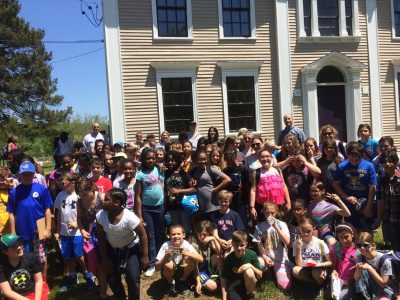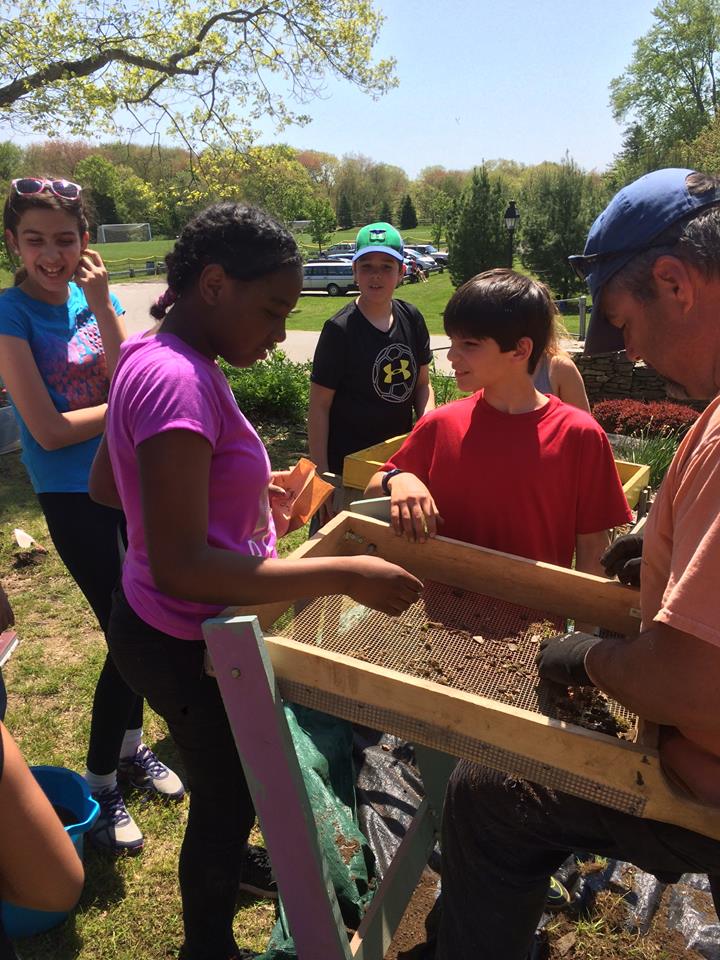
Student participants at the Cesar and Lois Peters dig in Hebron
Speaking Engagements
If you would like me to speak to your community or group, I have a number of available lectures to choose from:
“Six Things Everyone Should Know About the Native American Archaeology of Connecticut”
The human history of Connecticut stretches back at least 12,000 years before the arrival of European colonists, but people are far less familiar with the Indigenous history of our state. The archaeological and ethohistorical records provide information about Indigenous people who lived in what is now Connecticut prior to widespread European settlement and colonial record-keeping. This talk will cover the human history of Connecticut from the end of the last Ice Age to the present day. To best cover such a long time period, this talk is centered around several key topics discussed chronologically: 1) arrival and settlement of people in Connecticut at the end of the last Ice Age, 2) adapting to the post-glacial landscape, 3) increasing populations, new foods, and new technologies, 4) the rise of socially and politically complex societies, 5) Indigenous people and the Colonial European invasion, and 6) Indigenous people and archaeology in Connecticut today.
The Farmington Mastodon: Connecticut at the End of the Last Ice Age
In August of 1913, workmen digging a ditch on the Hill-Stead estate of A.A. Pope in Farmington uncovered the remains of a mastodon. It is the most complete mastodon ever found in Connecticut and it has recently been radiocarbon-dated (14,900–14,200 cal BP) as has another, less complete mastodon from New Britain (13,100-12,984 ca BP). While the stories of these mastodons are fascinating in their own right, the significance of the finds become even more apparent when considered in the light of recent archaeological finds, which push the date of documented human settlement in Connecticut back to at least 12,500 years ago. This talk focuses on what these old and new discoveries tell us about Connecticut’s history and environment at the end of the last Ice Age and examines the question of whether people and mastodons might have once shared the Connecticut landscape.
Archaeology at the 17th-Century Hollister Site, Glastonbury, Connecticut
Since 2015, the Office of State Archaeology has been conducting research excavations at the Lt. John Hollister Site, a large, well-preserved 17th-century farm complex on the Connecticut River in Glastonbury. The work was initiated by the late State Archaeologist Brian Jones as a public archaeology project and continues today. Using a combination of remote sensing techniques and archaeological survey and excavation, the buried remains of houses, outbuildings, and numerous other cultural features have been identified. When first established around 1650, the Hollister Site was on the Connecticut frontier, in an area where the wealthy residents of Wethersfield owned large farms that were often managed by tenants. The Hollister site tells the stories of two families: the Gilberts, who were tenant farmers (1651-1663) and the Hollisters, who eventually settled on the property and operated it as a prosperous farm in the latter part of the 17th century (1667-1710). Archaeological materials recovered and analyzed to date help us understand the daily lives of these families who were among Connecticut’s earliest European settlers. The materials shed light on their food, labor, material possessions, and their multifaceted relationships with their Indigenous neighbors. Continuing research at the site will help to clarify the complex social, political, and economic worlds of 17th-century Connecticut.
Public Archaeology with OSA
The Office of State Archaeology wishes to increase public awareness of the importance of historic preservation. OSA accomplishes this through a variety of public programs, lectures and events. One of my primary goals is to reach as diverse a population as possible so that everyone has a chance to enjoy the hands-on experience of history that archaeology provides. To meet these goals, OSA currently offers 1 week mini field schools for specific audiences as well as 1 day events for local communities. OSA depends on its Friends organization, FOSA to make all of this happen.

Building the next generation of historic preservationists.